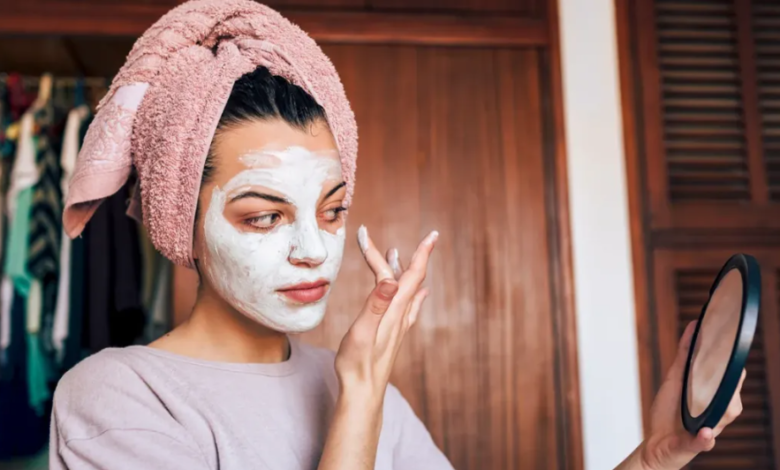How Long to Leave Pimple Patch On for Whiteheads, Blackheads, and Acne Spots

Knowing how long to leave pimple patch on can make all the difference in how effectively it clears your skin. Whether you’re dealing with stubborn whiteheads, deep blackheads, or inflamed acne spots, applying a pimple patch for the right duration ensures it absorbs impurities and speeds up healing without irritating your skin. In this article, we’ll look at how long to leave your pimple patch on for different types of breakouts, so you can wake up with calmer, clearer, and smoother skin.
How Pimple Patches Work
Pimple patches use hydrocolloid technology, the same material found in wound-healing bandages. These small, sticky patches create a protective seal over your pimple and help it heal faster. Here’s how they work step by step:
- They absorb fluid and impurities.
Pimple patches work by pulling out pus, oil, and excess fluid from the pimple. This helps reduce swelling, flatten the spot, and speed up healing.
- They create a moist healing environment.
This helps the skin repair itself faster while preventing dryness or scabbing.
- They act as a protective barrier.
The patch covers your pimple like a shield, keeping out dirt, bacteria, and your hands. This prevents infection, irritation, and scarring while the skin heals.
- They promote faster, cleaner healing.
Pimple patches keep your skin clean and moist, which helps it heal faster. They also calm irritation so your pimple shrinks and recovers with less redness or scarring.
Pimple patches absorb what your skin doesn’t need and protect what it does, giving you clearer skin without squeezing or picking.
How Long to Leave a Pimple Patch On
Most pimple patches include clear instructions on the package. Leaving a patch on for 8–12 hours gives the best results. That’s why they work well overnight or on a relaxed day when you’re not very active. Here’s what happens during that time:
- The patch absorbs excess fluid.
The patch pulls out pus, oil, and impurities over several hours. A white or puffy patch means it has successfully absorbed impurities.
- It helps flatten the pimple.
This time frame allows enough absorption to reduce swelling and redness, making the blemish much less noticeable.
- Don’t remove it too soon.
If you peel it off after only a couple of hours, the patch won’t have enough time to work properly, and you might think it’s ineffective. Be patient and give it time to do its thing.
- Don’t leave it on too long.
Once the patch is full and has turned white, it’s no longer useful. Leaving it on for too long (more than 12 hours) can cause irritation or dryness.
Apply the patch overnight for easy, uninterrupted healing and a calmer, flatter pimple in the morning. If your pimple isn’t fully healed, simply clean the area and apply a fresh patch.
When to Remove or Replace the Patch
Knowing when to take off your pimple patch is just as important as knowing how long to wear it. Leaving it on for the right amount of time ensures it works effectively without irritating your skin. Here’s how to tell when it’s time to remove or replace your patch:
- When it turns white or swollen
This is the clearest sign the patch has done its job. The white or cloudy appearance means it has absorbed pus, oil, and fluid from the pimple. Once it looks full, it’s time to gently peel it off.
- When the edges start lifting
If the patch begins to peel or doesn’t stick well anymore, it’s no longer sealed to your skin. This means it can’t absorb impurities effectively or protect the blemish from bacteria. Replace it with a fresh patch if needed.
- After 8 to 12 hours of wear
Most hydrocolloid patches work best within this time frame. Removing them too early means they won’t have enough time to pull out all the impurities, but wearing them too long can cause irritation or dryness.
- When the blemish needs another round
If your pimple is still red, swollen, or not fully healed after removing the patch, gently clean the area and apply a new one. Some pimples need a few patches to completely flatten.
- If you feel itching or irritation
If the patch feels uncomfortable, itchy, or causes redness, remove it right away. Your skin may be sensitive to the adhesive or ingredients.
Peel it off slowly from one edge to avoid hurting your skin. If there’s any residue left, rinse with warm water or use a mild cleanser before putting on a new patch.
See also: The Lingering Shadows: How Bullying Erodes Mental Health and Effective Intervention Strategies
Common Mistakes to Avoid
Pimple patches are simple, but small mistakes can make them less effective. Here’s what to avoid.
- Removing the patch too early
If you take it off in less than 4–6 hours, it won’t have enough time to absorb fluid or flatten your pimple. Most patches work best after 8–12 hours, so be patient.
- Applying to wet or oily skin
Patches stick best to clean, dry skin. Apply patches only on clean, dry skin for best results.
- Using on open or bleeding pimples
Hydrocolloid patches are made for closed pimples or whiteheads. Using them on broken skin can cause irritation or infection. Wait until the spot stops bleeding.
- Popping your pimple first
Touching or squeezing adds bacteria and can cause scars. Leave the patch on to safely absorb impurities.
- Reusing patches
Patches are for one-time use only. Once it turns white, toss it and apply a new one. Reusing can spread bacteria and make it less effective.
Apply on clean, dry skin, leave overnight, and replace as needed for a fully flattened pimple.
Tips for Best Results
Want your pimple patch to work as effectively as possible? Follow these simple but important tips to get the most out of it:
- Apply before bed.
Nighttime is ideal since your skin can heal without interruptions from movement, sweat, or makeup. By morning, the patch will have absorbed impurities and flattened the spot.
- Start with clean, dry skin.
Wash your face with a gentle cleanser and make sure the area is completely dry. Any moisture, oil, or leftover skincare products can prevent the patch from sticking and working properly.
- Choose the right patch size.
Choose one that fully covers the pimple with a bit of space around it. This ensures a proper seal and better absorption.
- Leave it on long enough.
For best results, keep the patch on for 8–12 hours (overnight works perfectly). Remove when it turns white or starts to peel.
- Replace if needed.
If the pimple hasn’t fully flattened or still feels active, clean the area gently and apply a fresh patch.
- Avoid applying products over the patch.
Lotions, oils, or serums can loosen the adhesive and stop it from working effectively. Keep the area product-free while the patch is on.
Store your patches in a cool, dry place to keep them sticky and effective. For daytime use, go for thin, clear patches that blend easily under makeup.






